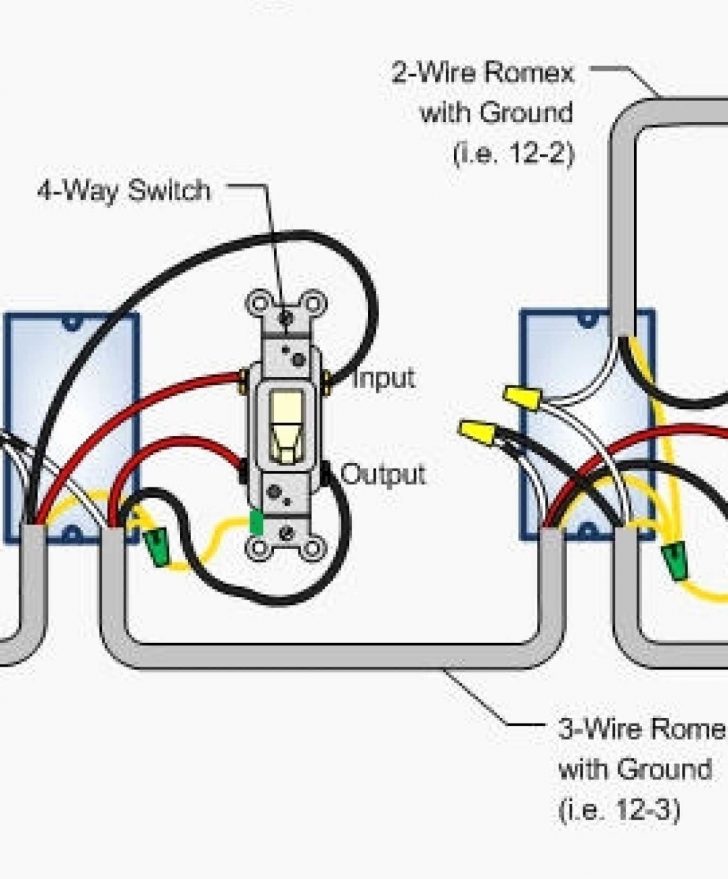So, you've opened up your dimmer switch and found yourself staring at a perplexing combination: two red wires, a single black wire, and a lone green wire. Feel a slight panic rising? Don't worry, you're not alone. This wiring configuration, while potentially intimidating, is more common than you might think. Let's dive into the world of dimmer switch wiring and decipher this colorful puzzle.
Understanding the function of each wire is the first step. Typically, in standard electrical wiring, black signifies the "hot" wire carrying the current, white is the neutral, and green is the ground. But when a dimmer switch throws two red wires into the mix, it can throw even the most seasoned DIYer for a loop. This generally indicates a more complex switching setup, often involving a three-way or even four-way switch arrangement. This means the dimmer switch controls the light fixture from multiple locations.
Before we proceed, a crucial disclaimer: Electricity is not a game. If you're not comfortable working with electrical wiring, call a qualified electrician. Seriously. This is not the time to test your luck. But if you're feeling brave (and knowledgeable), let's continue.
The presence of two red wires on your dimmer suggests that they are acting as travelers, carrying the current between the switches in a multi-location control system. The black wire is likely your incoming hot wire, and the green, as always, is your ground. This configuration allows you to adjust the lighting level from different points in a room or hallway. Imagine the convenience of controlling the lights from both the top and bottom of a staircase – that's the magic of three-way and four-way switching.
Now, the history of dimming lights isn't exactly glamorous. Early dimmers were bulky, inefficient, and often produced a noticeable buzzing sound. Modern dimmers, however, are sleek, silent, and significantly more energy-efficient. They allow for precise control over lighting ambiance, transforming a room from brightly lit for tasks to softly illuminated for relaxing. But even with advancements in technology, the underlying principles of electrical wiring remain constant, which brings us back to our two red wires.
One common issue with dimmer switches, especially in older homes, is compatibility with certain types of light bulbs. LEDs and CFLs can sometimes flicker or buzz when used with traditional dimmers. Ensure your dimmer switch is rated for the type of bulbs you're using. Another potential problem is incorrect wiring, which can lead to a non-functioning switch or, worse, a fire hazard.
Benefits of Dimmer Switches:
1. Energy Savings: Lowering light levels reduces energy consumption.
2. Mood Enhancement: Adjusting light intensity creates desired ambiance.
3. Bulb Life Extension: Running bulbs at lower power can prolong their lifespan.
Troubleshooting a Dimmer Switch with 2 Red, 1 Black, 1 Green Wires:
1. Turn off the power! This is paramount for safety.
2. Carefully disconnect the wires and label them for reconnection.
3. Consult the dimmer switch's wiring diagram, usually included with the switch.
4. Reconnect the wires according to the diagram, ensuring proper connections.
5. Restore power and test the switch.
Advantages and Disadvantages of Dimmer Switches
No table implementation within <p> tags. Check HTML documentation.
Best Practices:
1. Always turn off the power before working on any electrical wiring.
2. Use wire strippers to ensure clean wire ends for secure connections.
3. Consult a wiring diagram specific to your dimmer switch model.
4. Use a voltage tester to double-check connections.
5. If unsure, consult a qualified electrician.
FAQs:
1. Why are there two red wires? Likely indicates a three-way or four-way switch setup.
2. Can I replace a regular switch with a dimmer? Usually, but compatibility is key.
3. What if my lights flicker? Check bulb compatibility or dimmer wiring.
4. Is it safe to DIY? Only if you have experience with electrical wiring.
5. Where can I find a wiring diagram? Usually included with the dimmer switch.
6. What if the dimmer doesn't work? Check wiring and power supply.
7. Do I need special bulbs? Dimmable LEDs or CFLs are often required.
8. Can I use a dimmer with a fan? Specific fan-rated dimmers are needed.
In conclusion, deciphering the mystery of the two red wires, one black wire, and one green wire on your dimmer switch isn't as daunting as it might initially appear. Understanding the basic principles of electrical wiring, along with following safety precautions, empowers you to confidently tackle this common wiring scenario. The benefits of dimmer switches, from energy savings and mood enhancement to bulb life extension, make them a valuable addition to any home. Remember, while DIY electrical work can be satisfying, safety should always be your top priority. If in doubt, consult a qualified electrician. Don't let the fear of a few colored wires stand between you and the perfectly illuminated home of your dreams.
Unforgettable ocean shores washington beach camping adventures
Brightening your home with white gloss paint from bq
Windows 10 thumbnails not showing lets fix it
House Wiring White And Black Wires - Khao Tick On
Installing Dimmer Switch 3 Black Wires - Khao Tick On
DIAGRAM Wiring Dimmer Switch Diagram 2 Black 1 Red - Khao Tick On
Wiring Light Switch To Fan at Diane Bellinger blog - Khao Tick On
3 Way Switch With Outlet Wiring - Khao Tick On
Switch Wiring Diagram Power At Switch - Khao Tick On
dimmer switch 2 red wires 1 black 1 green - Khao Tick On
How To Connect Light Fixture Wires - Khao Tick On
Lutron Fan Light Switch - Khao Tick On
dimmer switch 2 red wires 1 black 1 green - Khao Tick On
dimmer switch 2 red wires 1 black 1 green - Khao Tick On
Light Switches Electrical Code at Hugh Troyer blog - Khao Tick On
3 Way Switch With A Dimmer - Khao Tick On
What Color Wire Is Hot In House Electric - Khao Tick On
Installing A Dimmer Switch 3 - Khao Tick On












